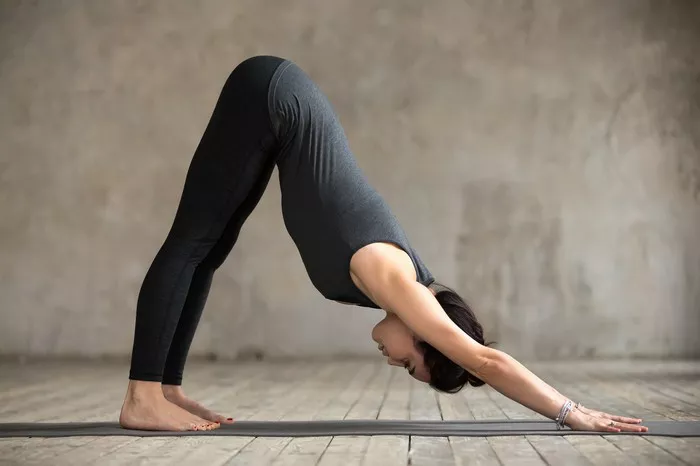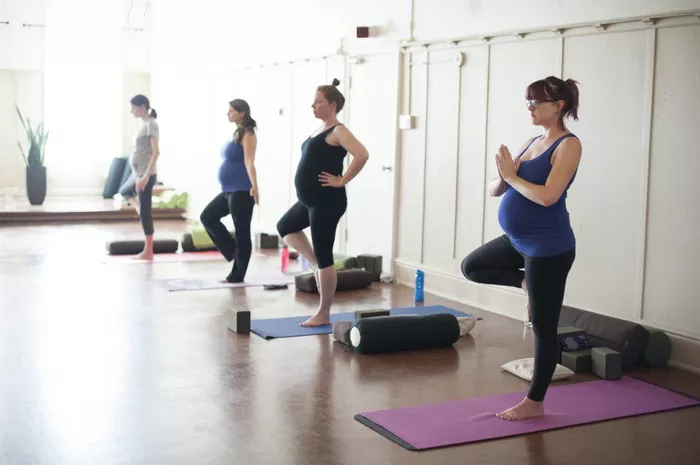Hot yoga is a form of yoga practice that is conducted in a heated room, typically maintained at a temperature ranging from 95 to 105 degrees Fahrenheit (35 – 40.5 degrees Celsius) with a relatively high humidity level. This unique environment significantly intensifies the practice and brings about a multitude of effects on the body and mind.
One of the primary advantages of hot yoga is its profound impact on flexibility. The heat causes the muscles to warm up more quickly and deeply than in a regular yoga session. As a result, the connective tissues and muscles become more pliable, allowing for a greater range of motion. For example, poses like the Forward Fold (Uttanasana) can be executed with increased depth, enabling the practitioner to stretch the hamstrings and lower back more effectively. This enhanced flexibility not only helps in performing yoga postures better but also has positive implications for daily activities, reducing the risk of muscle strains and improving overall body mobility.
Moreover, hot yoga is also a great workout for building strength. The combination of holding challenging poses and the added resistance from the heated environment forces the muscles to work harder. In a Hot Yoga class, poses such as the Warrior II (Virabhadrasana II) engage the leg muscles, including the quadriceps, hamstrings, and calves, as well as the core muscles. The core is constantly activated to maintain balance and stability throughout the practice. Over time, regular participation in hot yoga can lead to increased muscle tone and strength, similar to what one might achieve through traditional strength training exercises, but with the added benefits of flexibility and balance.
Physical Benefits
Improved Flexibility
As mentioned earlier, the heat in hot yoga plays a crucial role in enhancing flexibility. The warm temperature causes the synovial fluid in the joints to become more viscous, which lubricates the joints and allows for smoother movement. Additionally, the heat relaxes the muscle spindles, which are the sensory receptors within the muscles that monitor muscle length and tension. When the muscle spindles are relaxed, the muscles can be stretched further without triggering the stretch reflex that would otherwise cause the muscle to contract and resist the stretch. This means that practitioners can gradually work towards achieving more advanced yoga postures that require a high level of flexibility, such as the King Pigeon Pose (Eka Pada Rajakapotasana).
Increased Strength
Hot yoga challenges the body in multiple ways to build strength. The continuous flow of postures and the need to maintain balance and stability in the heated room engage various muscle groups simultaneously. For instance, in the Tree Pose (Vrksasana), the standing leg has to bear the body’s weight while the muscles of the lifted leg and the core work to maintain balance. The upper body is also engaged as the arms are often extended overhead or in specific positions. Over time, this consistent activation of different muscle groups leads to increased muscle mass and strength. Studies have shown that regular hot yoga practice can improve muscle strength comparable to other forms of exercise, and it also helps in developing functional strength that is useful in daily activities and sports.
Enhanced Cardiovascular Endurance
The elevated temperature in a hot yoga class forces the heart to work harder to pump blood and circulate oxygen throughout the body. As the body tries to cool down in the heat, the heart rate increases, similar to the effect of aerobic exercise. Poses like the Sun Salutations (Surya Namaskar), which are often repeated multiple times in a hot yoga session, involve continuous movement and transitions that raise the heart rate and keep it elevated for an extended period. This improved cardiovascular endurance is beneficial for overall heart health, reducing the risk of cardiovascular diseases such as heart attacks and strokes. It also increases the body’s ability to perform physical activities for longer durations without getting fatigued easily.
Detoxification
The sweating that occurs during hot yoga is believed to aid in the detoxification process. The body eliminates toxins through sweat, and the intense sweating in a hot yoga class can help remove impurities such as heavy metals, alcohol, and other environmental pollutants from the body. The heat also stimulates the lymphatic system, which is responsible for filtering and removing waste products from the body. As the lymphatic fluid circulates more efficiently in the heated environment, it helps in flushing out toxins and reducing inflammation. This detoxifying effect can leave practitioners feeling rejuvenated and can have a positive impact on skin health, as the elimination of toxins may result in a clearer complexion.
Joint Health
The combination of increased flexibility and the lubrication of joints in hot yoga can contribute to better joint health. The regular practice of hot yoga helps in maintaining the range of motion in joints, reducing the stiffness that often comes with age or inactivity. For example, people with mild arthritis may find relief in hot yoga as the warm, gentle movements can help reduce pain and improve joint function. The synovial fluid, which becomes more viscous in the heat, nourishes the cartilage in the joints, keeping it healthy and preventing degeneration. However, it is important to note that those with severe joint problems should consult a doctor before starting hot yoga to ensure it is a suitable form of exercise.
Mental Benefits
Stress Reduction
Hot yoga provides an excellent opportunity for stress relief. The focused concentration required to perform the postures and the intense physical effort help to shift the mind away from daily stressors. The heat also has a relaxing effect on the nervous system, promoting the release of endorphins, which are the body’s natural feel-good hormones. Endorphins help to reduce the perception of pain and induce a sense of well-being and relaxation. In addition, the deep breathing techniques practiced in hot yoga, such as Ujjayi breathing, activate the parasympathetic nervous system, which counteracts the effects of the sympathetic nervous system responsible for the body’s stress response. This balance in the nervous system helps to lower cortisol levels, the stress hormone, and leaves practitioners feeling calmer and more centered after a class.
Improved Concentration and Mental Clarity
The combination of physical movement, breath control, and the need to maintain focus in a hot yoga class sharpens the mind. As practitioners move from one pose to another, they have to concentrate on their body alignment, balance, and breath. This constant mental engagement helps to improve concentration skills and mental clarity. The heat can also have a purifying effect on the mind, similar to its detoxifying effect on the body. It helps to clear away mental clutter and distractions, allowing for a more focused and present state of mind. Over time, regular hot yoga practice can enhance cognitive function, including memory and attention span, which can have a positive impact on work, studies, and daily life.
Emotional Balance
Hot yoga can have a significant impact on emotional well-being. The release of endorphins and the reduction in stress levels contribute to a more stable emotional state. The practice also encourages self-awareness and self-acceptance as practitioners face their physical and mental limitations on the mat. For example, in challenging poses, one learns to be patient and kind to oneself, rather than getting frustrated or angry. This self-compassion and self-awareness can translate into better emotional regulation off the mat, helping to manage emotions such as anxiety and depression. The meditative aspect of hot yoga, where one focuses on the present moment and the breath, also provides a space for emotional healing and growth, allowing practitioners to process and release pent-up emotions in a safe and controlled environment.
Precautions and Considerations
Hydration
Due to the excessive sweating in hot yoga, proper hydration is crucial. Practitioners should drink plenty of water before, during, and after the class. Dehydration can lead to dizziness, fatigue, and even more serious health issues such as heat exhaustion or heat stroke. It is recommended to drink at least 16 – 20 ounces of water a few hours before class and to sip water regularly during the session. Some studios also provide electrolyte drinks to help replace the minerals lost through sweating.
Overexertion
The heat and intensity of hot yoga can make it easy for practitioners to overexert themselves. It is important to listen to the body and take breaks when needed. Pushing too hard can lead to muscle strains, sprains, or other injuries. Beginners should especially be cautious and not try to match the advanced postures or the pace of more experienced practitioners. They should focus on proper form and gradually build up their strength and flexibility over time.
Medical Conditions
People with certain medical conditions should approach hot yoga with caution. Those with heart problems, high blood pressure, diabetes, or respiratory issues should consult their doctor before starting a hot yoga practice. The increased heart rate and heat stress in a hot yoga class may pose risks for individuals with pre-existing medical conditions. Pregnant women should also seek medical advice, as the heat and some of the postures may not be suitable during pregnancy.
Conclusion
Hot yoga offers a wide range of physical and mental benefits. From improving flexibility, strength, and cardiovascular endurance to reducing stress, enhancing concentration, and promoting emotional balance, it is a comprehensive form of exercise and self-care. However, it is essential to take precautions such as proper hydration, avoiding overexertion, and considering any pre-existing medical conditions. When practiced mindfully and safely, hot yoga can be a valuable addition to a healthy lifestyle, helping individuals achieve a greater sense of well-being and vitality both on and off the mat.
Related topics


























